Academic Myasnitskaya
No. 3. Ryazan metochion
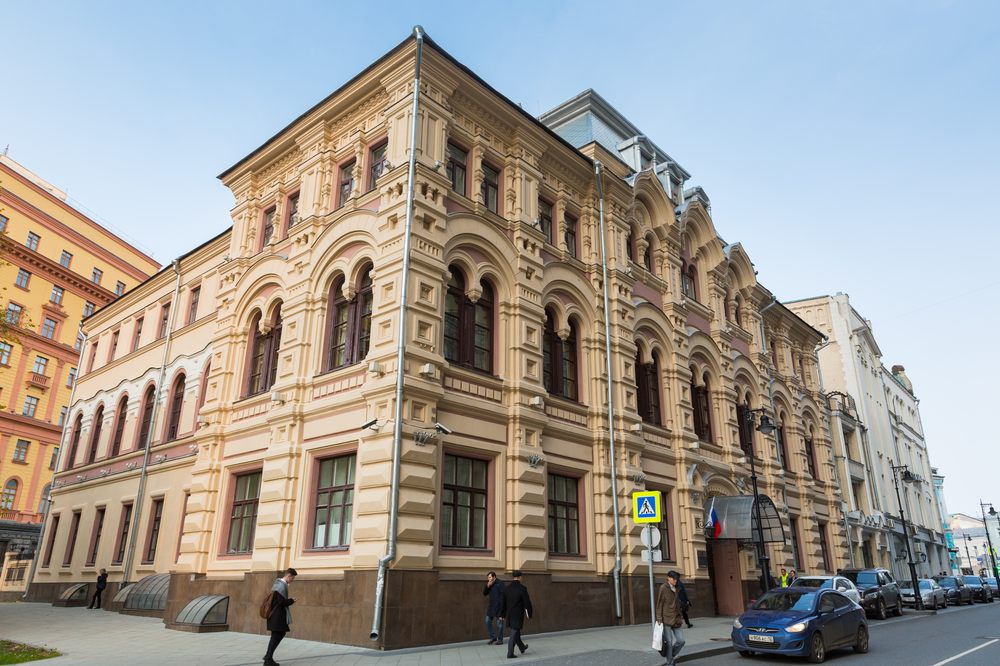
In the 15th century this building housed the Godunov chambers, and later on the Ryazan metochion, where the Ryazan bishops lived. Under Catherine the Great it was home to the Secret Expedition, something akin to the secret police, which investigated a variety of issues of state. There were rooms where defendants, including Emelyan Pugachev, were held.
After the revolution the building was transferred to the Supreme Soviet of National Economy (VSNKh). It housed the Fundamental Library of the Academic-Technical Department of the VSNKh, complete with reading room and reference and bibliographic department, which contained a compilation of literature on current technical specializations.
The library was intended for specialists, engineers, and students, and was built up along similar lines to the Kh S Ledentsov Library of the Society for the Advancement of Experimental Science and Practical Applications, and the Moscow Technical Library Society, founded before the revolution.
The library performs extensive critical, bibliographical, and advisory work in responding to reader requests. The library has trained and supported well-known academic librarians in their professional careers.
The library also had a publishing house, which produced technical journals and reviews on new developments in scientific and technical literature in this field. There was also a State Technical Publishers bookshop. From 1968, it housed the Information and Computing Center. The library currently holds over 8 million publications in the fields of natural and applied sciences, engineering, technology, mechanical engineering, ecology, and economics.
#Literary Myasnitskaya #Academic Myasnitskaya #Architectural Myasnitskaya
No. 7 Bldng 2. Chertkov House
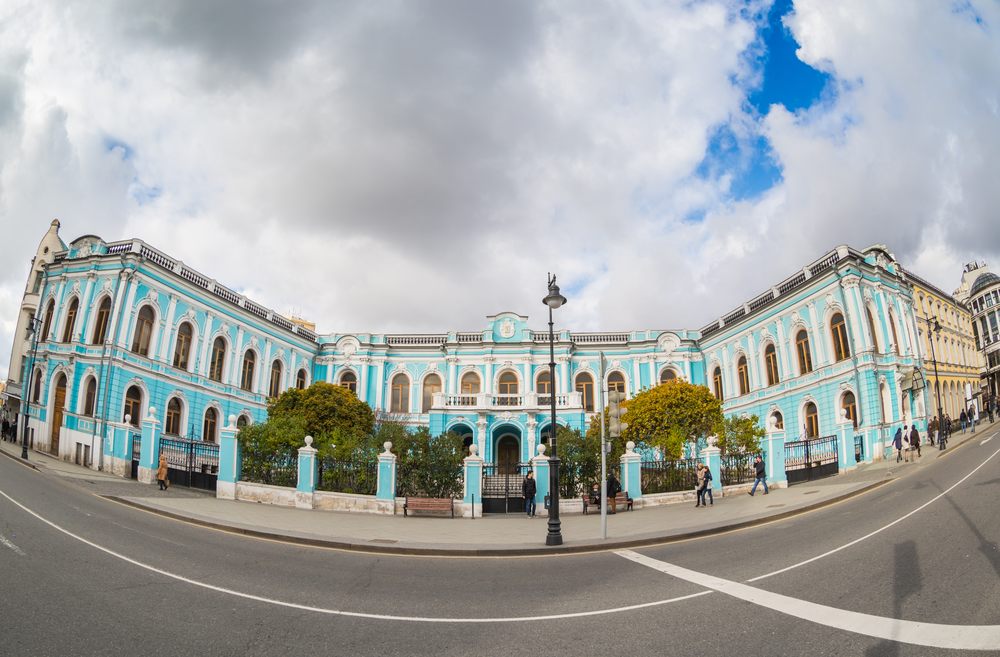
Dolkorukov estate, in the 18th century ownership passed to the Saltykovs.
Prince Alexei Dolgorukov a tutor to young emperor Peter II, inherited the estate. In 1742 ownership passed to Nikolai Saltykov and his heirs.
In 1831, the property was acquired by Col (Rtd) Alexander Chertkov, Moscow Province Marshal of Nobility and renowned bibliophile who built up a priceless library.
Historian and literary critic Petr Bartenev was appointed director of the library, which Chertkov’s son bequeathed to the city. He advised Leo Tolstoy on historical details while the Russian author was writing War and Peace, and wrote stories about Pushkin as told by his contemporaries – publications comprised of first-hand sources about the poet.
Bartenev used the funds left by Chertkov to produce the literary-historical publication ‘Russian Archive’, which detailed valuable academic studies and research into the history of materials – memoirs, letters, literary, artistic, and departmental documentary information on the cultural and political history of the nobility. Numerous valuable sources such as travel notes about Russia by European visitors were first published in Russian Archive.
Over the years 1862-1865, meetings of the Society of Russian Doctors, headed by renowned doctor Fedor Inozemtsev, were held, gratis, at the property. Inozemtsev was the first Russian doctor to operate using ether anaesthesia. He studied together with Nikolai Pirogov, and they went on to both complete medical internships together in Europe and work together there, after which Inozemtsev became one of the initiators of the wide-ranging reforms to Russia’s educational model along western lines. He was a popular doctor, and treated around 6,000 patients in a year, including as a general practitioner. He developed the idea of milk and dairy products’ use in treatment, which he described in his work “On the treatment of colds and associated diseases, and gastrointestinal fever, with milk.”
In the early C20, the basement of one of the wings of this building housed the chemical-bacterial institute headed by Dr Philip Blumenthal, who developed preparations for protective vaccinations against cholera and other diseases.
After the revolution, the Dzerzhinsky Moscow House of Scientific and Technical Propaganda was located in the building. The renowned scientist Ivan Artobolevsky, USSR Academy of Sciences academician and professor of Mechanics at Moscow State University, created approaches to kinematic analysis of complex multilink mechanisms, and was also an outstanding teacher.
#Literary Myasnitskaya #Academic Myasnitskaya #Architectural Myasnitskaya #People
No. 13. Income-bearing property owned by S. Davydova, Kh Spiridonov, buildings dating from the 18th-20th centuries
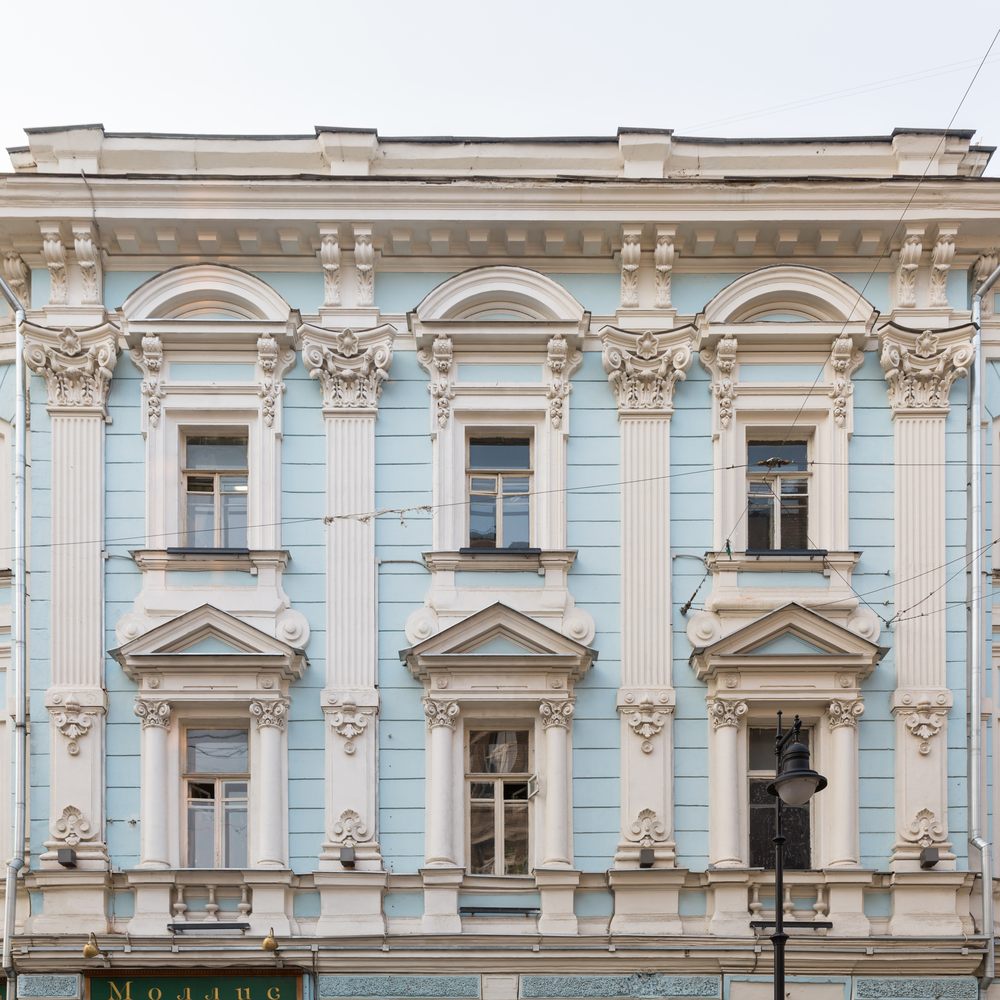
From the beginning of the 18th century to 1837 the property was owned by the Saltykovs.
In 1825 the School for Drawing as it Relates to Arts and Crafts opened here (School of Technical Drawing), founded by the well-known philanthropist Count Sergei Grigorievich Stroganov.
In 1921 the first higher university institution for the media was founded here, the Institute for Red Journalists (later known as the State Institute of Journalism), which spent 10 years operating out of this building. This institution marked the beginning of journalism as a science, known as ‘newspaper studies’.
#Academic Myasnitskaya #Artistic Myasnitskaya #Architectural Myasnitskaya #People
No. 21 Yushkov House
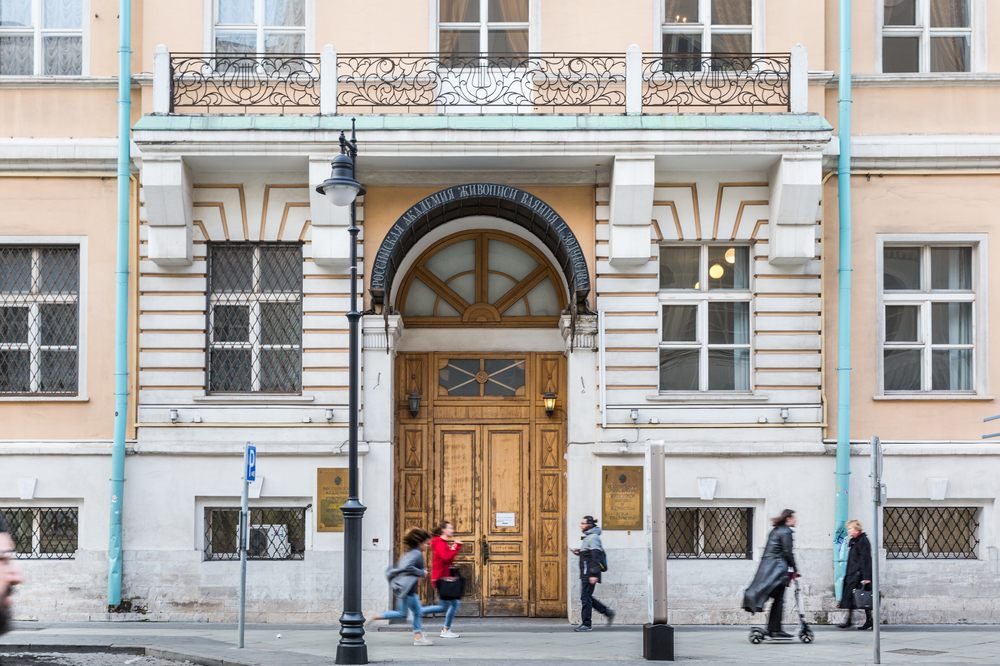
This part of Myasnitskaya street in the late 18th century was owned by the Yushkovs, and a neighboring side street was named after them (now Bobrov).
In 1780 the estate was bought by Ivan Ivanovich Yushkov, and the current building was constructed. In 1838 one of the halls in the building was leased by the Moscow Society for the Arts for its ‘Public Drawing, Landscape and Sculpture Classes’.
In 1865 these classes were merged with those at the Moscow Palace Architectural School, and were renamed the Moscow School of Painting, Sculpture, and Architecture (MUZhVZ). A host of well-known artists, sculptors and architects studied and taught here: Konstantin Melnikov, Vasily Perov, Vasily Polenov, Alexei Savrasov, Valentin Serov, Konstantin Korovin, Isaak Levitan, Mikhail Nesterov, among others.
After the revolution, MUZhVZ and the Stroganov school were brought together into the Higher Artistic and Technical Studios, known as VKhUTEMAS. The sign on Myasnitskaya went on to change several times in the years that followed: VKhUTEIN, Institute of Fine Arts. Today it is home to the Russian Academy of Painting, Sculpture and Architecture of Ilya Glazunov.
No. 8. Porcelain House

In the 18th century the building was owned by the Zybin family, and later by Prince Tyufyakin, and even served as a finishing school for noblewomen in the years before 1825.
From the mid 19th century it was rented out to paying guests and in 1830 it became well-known, as Moscow University professor and member of the St Petersburg Academy of Sciences Mikhail Pogodin moved in. An historian, journalist, and publisher, he was a very active figure in society, and was known as a progressive. He would play host to famous guests including Alexander Pushkin, Nikolai Gogol, Mikhail Shchepkin, and Sergei Aksakov, and he prepared Afanasy Fet for his university entrance exam, held literary group meetings and editorial meetings for his journals here. Later, Tsar Nicholas I asked Pogodin for advice over the Crimean Wars, and in 1852, the Tsar bought Pogodin’s collection of antiques for the state, paying 150,000 rubles in silver. The manuscripts were passed to the Public Library, and the archaeological and numismatic parts of his collection went to the Hermitage.
In 1873, the teacher Alexander Chugaev took up residence in the building. He was the father of Lev Chugaev, the renowned chemist and professor at Moscow Higher Technical School, St Petersburg Technological institute, and the founder and director of the Institute for the Study of Platinum and Other Precious Metals. He gave his name to the L.A. Chugaev Prize, still awarded to this day by the Russian Academy of Sciences in recognition for outstanding work in the field of chemistry and organoelement compounds.
Chugaev’s early work focused on bacteriology and biochemistry. He discovered a sensitive reaction to E Coli, differentiating it from the Typhoid bacteria. Ironically, he died from Typhoid in 1922. In 1890 the administration for the Moscow Association of Rubber Manufacturers was based here, headed by Ivan Ossovetsky, a specialist in the field of technical chemistry.
No.20. Building rented out by the heirs of the merchant Ananov
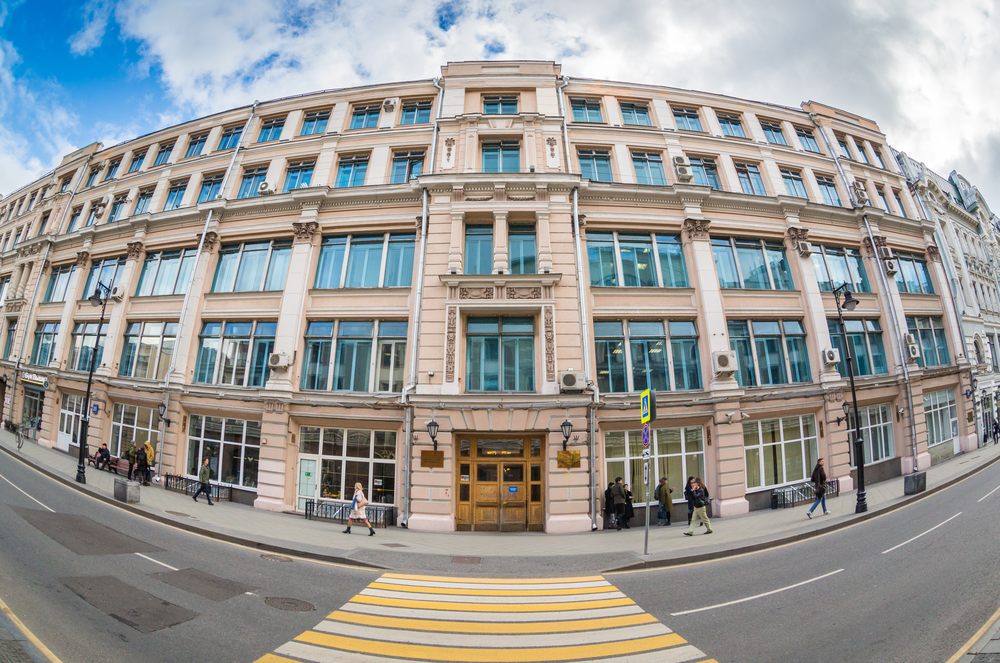
In the 18th century the property was owned by Koltsov-Mosalsky princes, their manor house is preserved to this day in the courtyard. In early 1845 the house was bought by the merchant I.S. Ananov, member of the board of the Lazarev Institute of Oriental Languages – an Armenian university that became part of the Moscow Institute of Oriental Studies in the 20th century. It currently houses the Armenian Embassy.
The existing building, which looks out onto Myasnitskaya, was built in 1900 by the architect Alexander Ivanov. It was rented by, among others, ‘Chief Office of Engineer Alexander Bari’, one of the first engineering companies in Russia. Bari was a close friend of Lev Tolstoy, Dmitry Mendeleev, Nikolai Zhukovsky, who worked in his office alongside the outstanding engineer and architect Vladimir Shukhov, who was their technical engineer.
In 1862 Bari’s father, who was exchanging letters with Karl Marx, was forced to emigrate to Zurich, where his son Alexander received an outstanding engineering education. He worked with his brother producing electric engines before returning to Russia to develop the oil sector. The oil plant that Bari opened in 1880 hired Dmitry Mendeleev as a consultant on technical and chemical aspects of production. In the construction bureau and at the plant, Alexander Bari ‘introduced an entirely new approach to work’ – salaries were 10% higher than at other plants, the working day was shorter, the company provided food and paid sick leave. Bari really pioneered effective management in Russia.
In the mid-1920s the building was transferred to the USSR Oil Syndicate and an additional two stories were added. This took place under the engineer Ivan Regberg, architect and teacher at MUZhVZ.
It currently houses HSE’s main building.
No. 22 Building rented out by the Sytov merchants, with a workshop that produced church ornaments and brocaded fabrics, architect A.N. Knabe, 1873-1900s
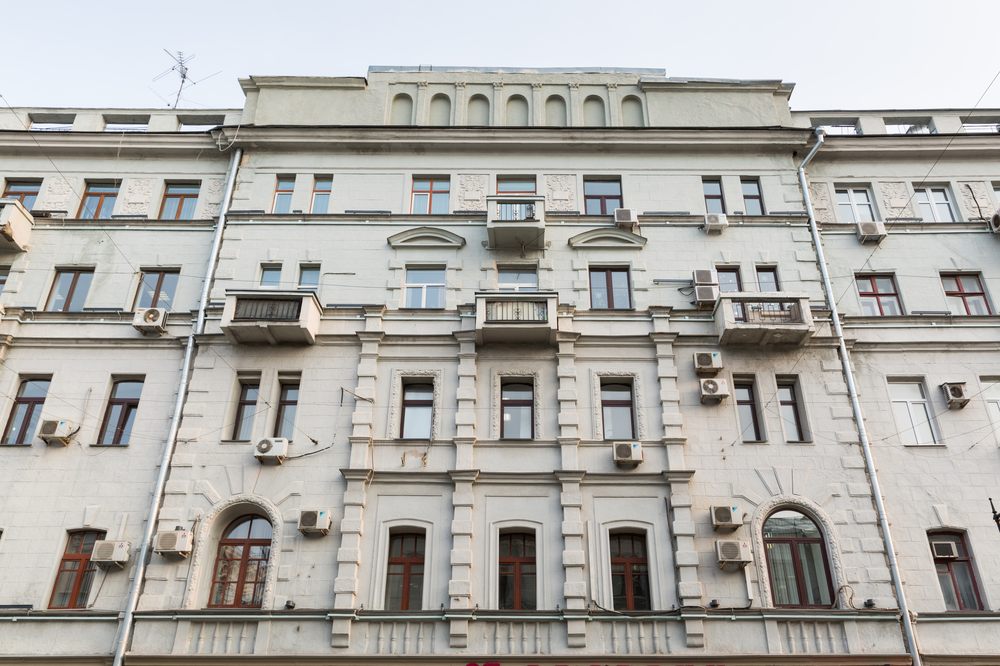
Bankovsky pereulok used to be known as Shuvalovsky pereulok, as it was home to Elizabeth Petrovna’s favorite, Peter Shuvalov, an active reformer who in 1753 initiated the creation of the Commercial Commission under the Senate.
In the 1890s the property was home to the Shtikh family. The head of the household was Moscow’s leading ENT specialist, Lev Shtikh, whose son was close friends with Boris Pasternak, who lived nearby. Shtikh had graduated from the Medical Faculty at Moscow University, and his fellow doctors chided him for seeing so many non-fee-paying patients – a good third of the people in his reception area were being treated for free and would leave his consulting room holding ten or fifteen kopeck coins for the medicine.
After the revolution, the Shtikhs’ apartment became home to seven families. In the 1950s Pasternak visited the Shtikhs in their one remaining room, and then they were asked to leave. Lev Shtikh’s son Alexander was appointed Chairman of the Gubernatorial Soviet of People’s Deputies after the revolution, his son Mikhail wrote about Lenin in the newspaper Soviet Russia, and in recognition of his propaganda Lenin personally issued an order that the Shtikhs should be allowed to remain in their flat, since the family was ‘serving the Soviets’.
Sergei Smolitsky wrote about the turbulent and sometimes tragic fate of this building and its inhabitants in his book On Bankovsky.
No. 24, Building rented out as Strognov School for Technical Drawing, architects A.E. Veber (1880-1883) and F.O. Shekhtel (1906)
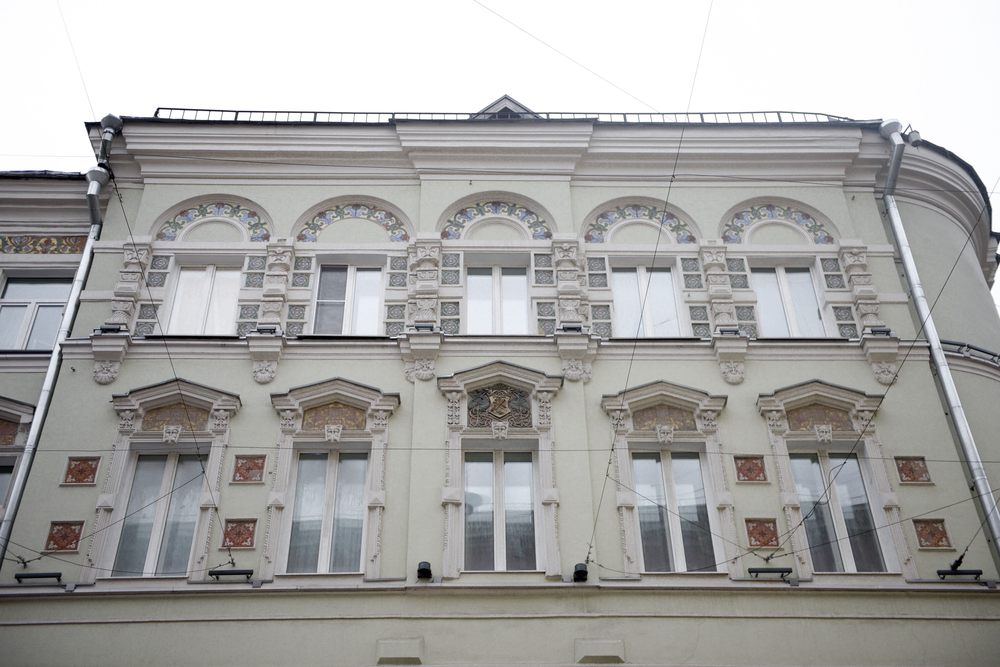
In the 18th century this building was owned by the Lopukhins and then subsequently by the Stroganovs. In 1839, it briefly housed the Technological Institute, and the Ministry of Finances. In 1843, it was used by the Stroganov Drawing School, which that year became a state institution, enabling talented children from poor families to enroll. In 1872, the school was renamed the Central Stroganov School for Technical Drawing.
The courtyard wing housed the Real School (or Reformist Lutheran School) headed by the famous teacher Ivan Fidler. It had a chemistry lab and choir.
In 1906 Fidler moved to Switzerland, where in Geneva, along with Nicholas Ge (the younger) he set up a school for the children of Russian emigrants.
This wing also housed the Commercial School for 40 pupils for a time, all children of members of the Society for Merchant Clerks, founded thanks to a donation of 60,000 rubles by the merchant Vikula Morozov and the brothers Pavel and Sergei Tretyakov.
The property’s courtyard hosted General Educational Courses for both genders eve before mixed-sex classes had become the norm, founded in 1945 together with the Chief Council for Women’s Educational Institutions. As of 1882, for example, there were 11,775,004 boys and 362,471 girls in a total of 28,329 primary schools in European Russia. This gender disbalance was alarming and over time was eradicated.
The upper floors of this wing housed Fedor Rerberg’s art school and the Moscow Association of Artists.